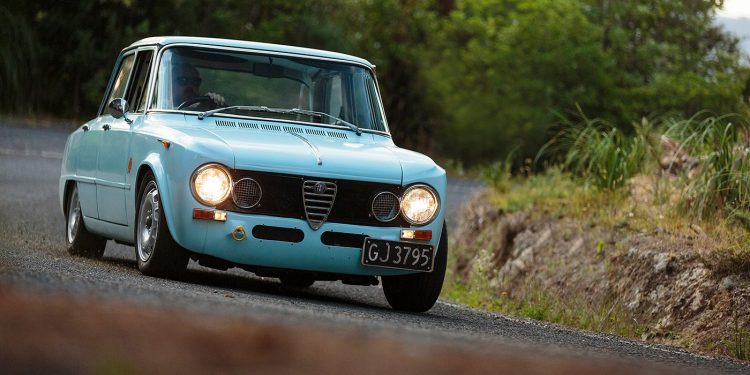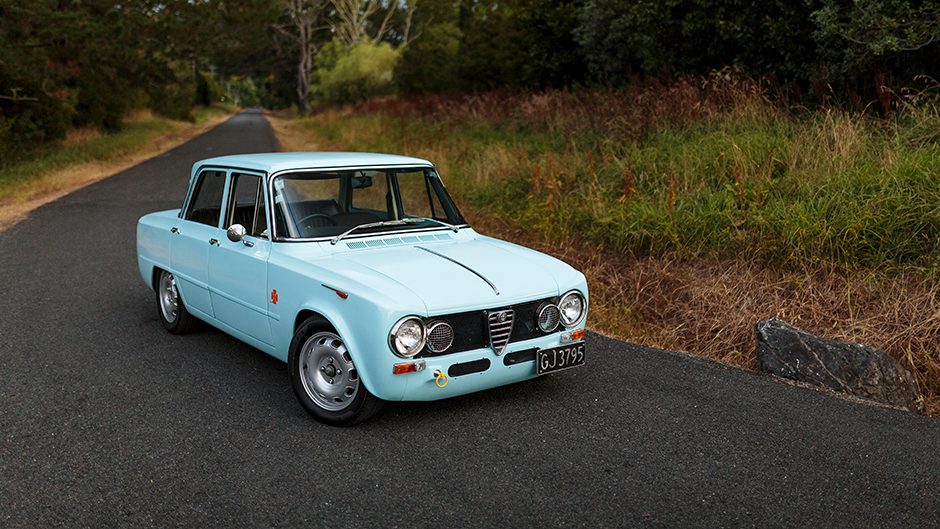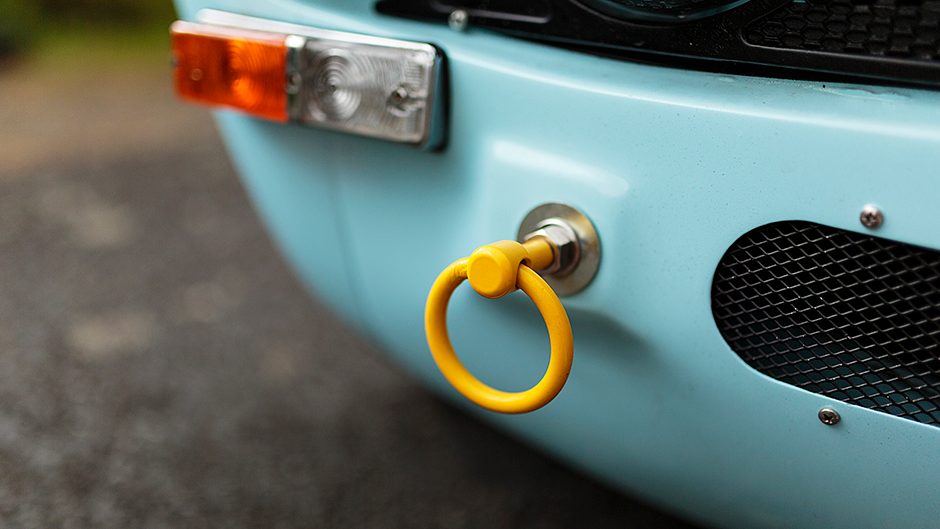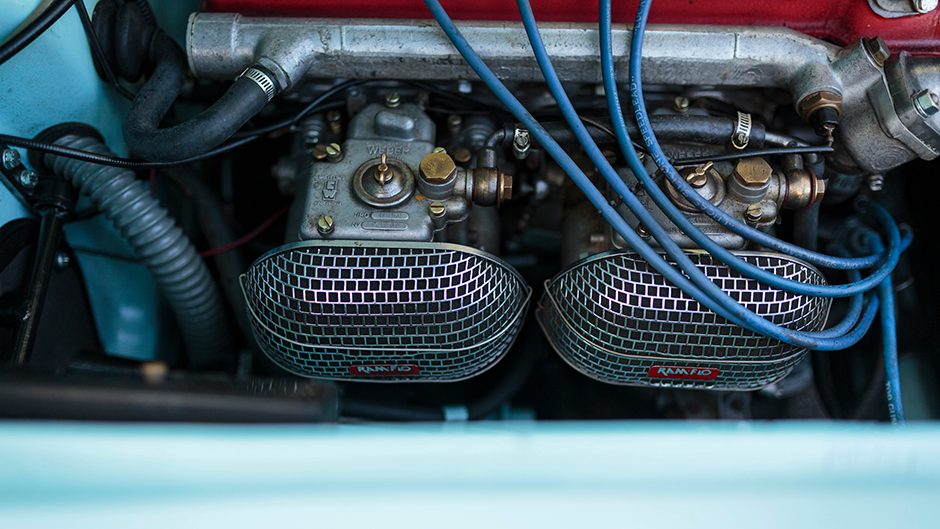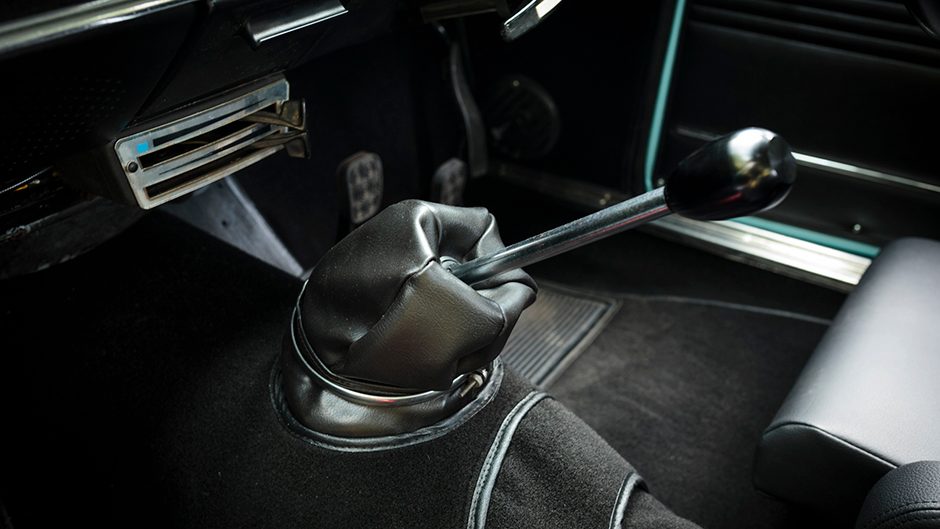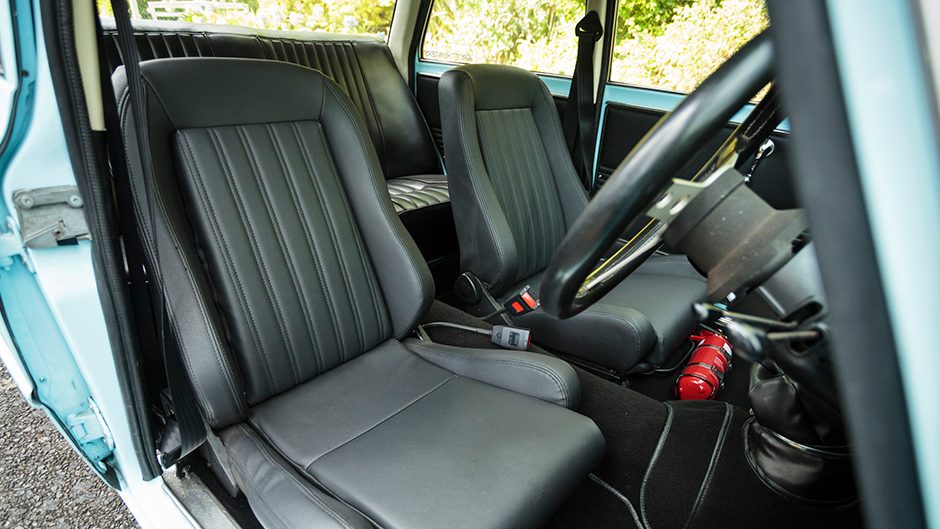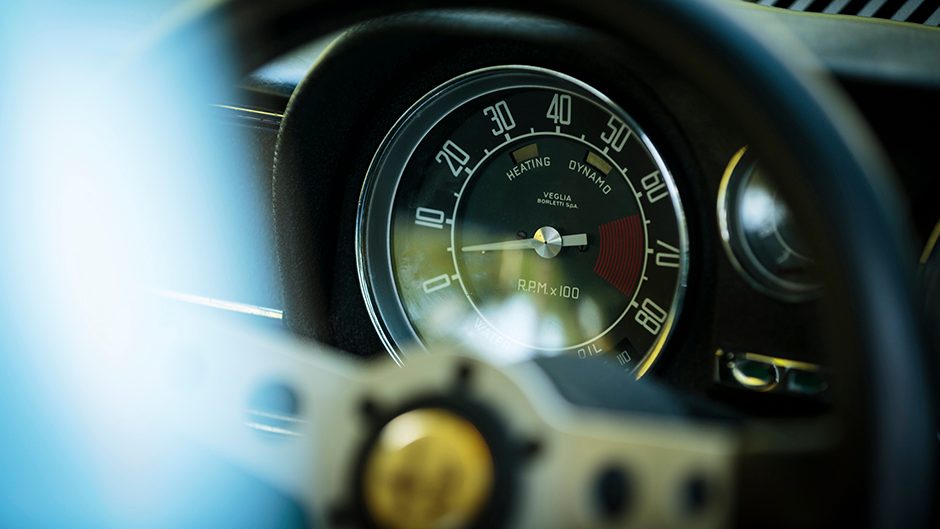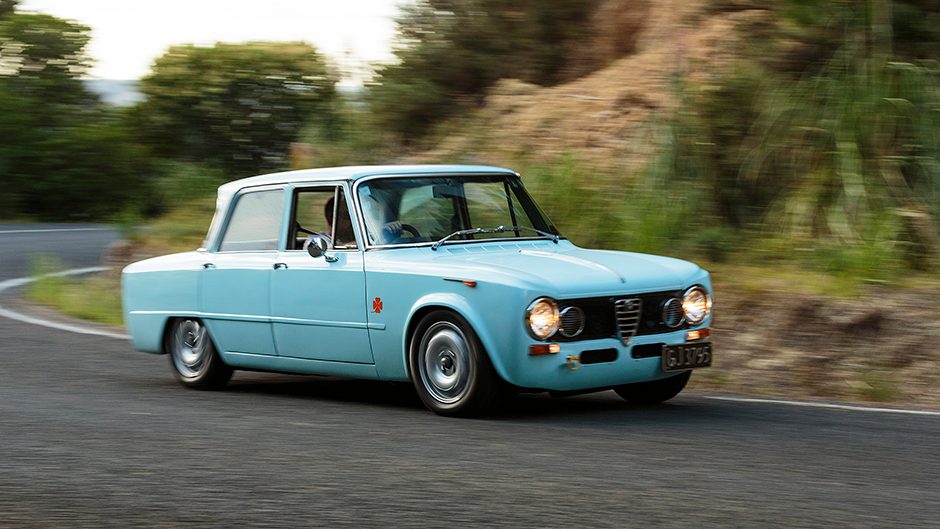1966 Alfa Romeo Giulia
Words Richard Opie | Photos Richard Opie
Classic Alfa Romeos provide a tactile and aural motoring experience with which few other marques can compete. But for serial Alfa-phile Rob Herbert, that’s not enough. He’s improved it further via the old adage “less is more”
Lay back, close your eyes and utter the words “cafe racer.” What connotations float through your consciousness? Speed. Noise. Rebellion. It’s an evocative moniker, one that even six decades since inception still conjures up a certain two-wheeled tarmac romance. Born during the fifties, cafe racer motorcycles epitomised a subset of British youth culture.
Rockers, or “ton-up boys” became notorious for pared-back, souped-up motorcycles emphasising speed as they raced from cafe to cafe, the throttle cracked wide with the magic 100mph in their sights. Cafe racer style is characterised by an absence of unnecessary extravagance. Anything redundant in the pursuit of performance is cast aside while the rest is honed to the point of functional excellence.
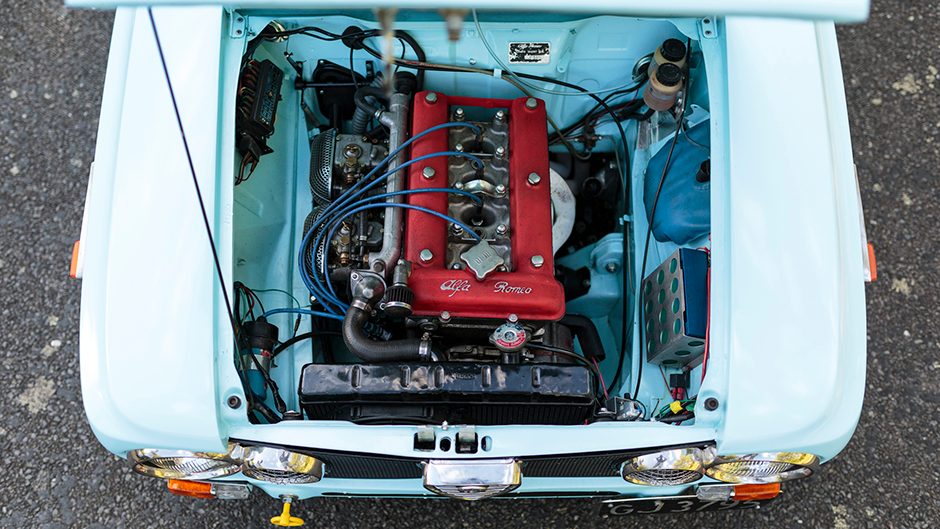
It’s an ethos spilling into the classic automotive sphere and one embraced by Rob Herbert. He’s the owner and builder of this self-styled cafe racer on four wheels, a ‘66 Alfa Romeo Giulia Super. It’s not the archetypal example of an Alfa. While the Giulia ushered in the ‘Type 105’ platform, a year or so later the Giulia Sprint GT coupe would follow. It was a sleek Bertone design that would go on to define sporting Alfa Romeos of the 1960s and 70s.
That said, the often overlooked Giulia was no shrinking violet. Wedging a racy engine into a mass production sedan wasn’t industry standard at the time but from the moment the Giulia TI hit the road, motivation was provided by 1.6 litres of classic Alfa twin cam. A touch over 90hp found its way to the tarmac via a set of skinny Pirelli Cinturato tyres, and although in modern terms it seems like a combination for abject misery, in 1962 the Giulia was a revelation.
It’s a stretch to say the Giulia invented the small sporting sedan concept but it certainly defines the notion. Media of the time praised the bubbly chassis behaviour, and revelled in the spritely performance. Despite the modest power output, a low kerb weight meant the 1600cc Giulia TI would make the sprint from a standstill to 60mph in a little over 12 seconds, besting more than a few sports cars of the era.
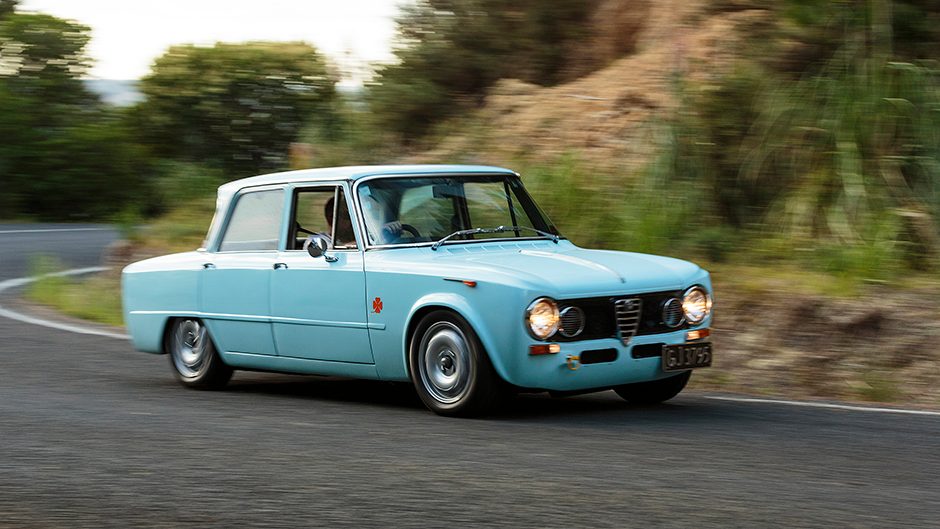
While it looks slabby, suggesting aeros akin to a brick through wet cement, the three-box design proved surprisingly slippery. With the benefit of wind tunnel testing, Alfa Romeo achieved a remarkable drag coefficient of only 0.34, albeit with somewhat polarising aesthetics. The package was impressive enough that Alfa Romeo took it touring car racing. The resulting homologation special was the Giulia TI Super. Retaining a 1600cc twin cam, the TI Super employed a pair of side-draft Weber carbs to push power to 110hp, good enough to send its 910kg to over 185km/h.
Magnesium alloy wheels, discs all around, bucket seats, and extensive lightening measures extending to removing the inner headlights all contributed to what has become the most desirable of Giulia sedans. Although the sum total seemed potent on paper, the spoiler to the Giulia’s touring car aspirations came in the formidable form of Colin Chapman. The Ford Lotus Cortina crashed the party, sweeping the table in the smaller car class and forcing a rethink for the beleaguered Italians.
The programme’s attention switched to the GTA coupe, the rest of course is history, and the Giulia’s tenure amongst the top echelons of European touring car racing largely forgotten. By most, that is. If the Herbert surname and boxy lines of a ‘60s Alfa sedan seem familiar, it’s probably because you’ve read about the combo between these pages before. Rob’s infatuation for all things classic and speedy is somewhat hereditary. Almost three years ago, father Tony’s Alfa Romeo GT 1300 Junior and Giulia racer graced these pages, and it’s clear that a proper dose of petrolhead parenting has set Rob on a course for classic indulgence.
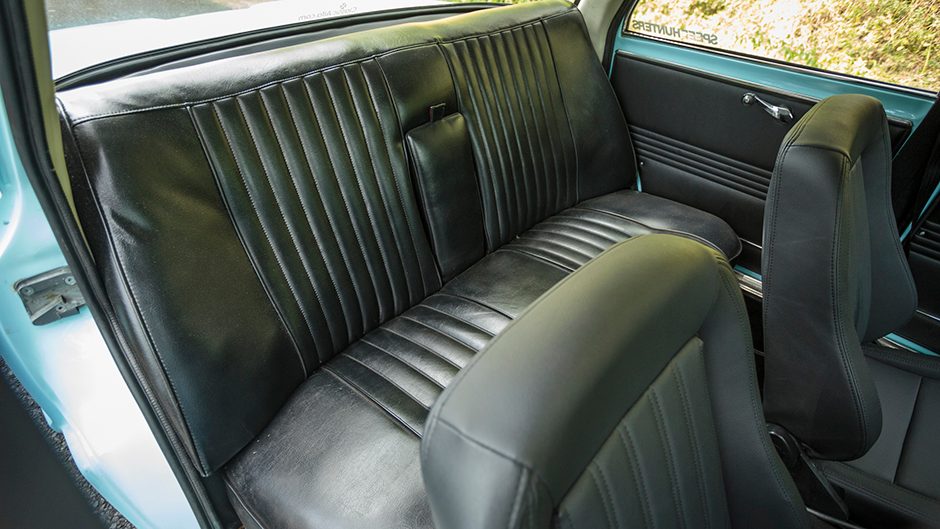
Although he has distant memories of a 1750 GTV being used as a family car, growing up amongst a steady stream of performance English machinery – namely Lotus Elans, a Type 14 Elite and even Ginettas – was always going to set the scene early on for Rob’s automotive escapades. Weekends at the track and evenings in the garage alongside Tony paved the way for an appreciation of mucking about with oily rags, and acclimatising to the right end of a wrench.
Introduction to his own classics came at the hands of small Fords. “I was really into classic Fords when I was about 15, so we restored a Mark 1 Escort, two-door, in bright Le Mans green.” A bunch of Mark 2 Escorts and a Mark 1 Cortina wagon followed, but soon gave way to a change in tastes. Turbochargers and all-wheel drive weapons from Japan sated a need for speed, but in the meantime Herbert senior had begun rekindling the passion for Milanese classics.
The “Alfa bug returned,” courtesy of a ‘step-front’ GT Junior, duly given a light restoration. Then came the Giulia race car project, campaigned among the Trofeo Series field with Rob at the helm. “It was such a cool car, a little bit unusual but something everyone liked, and I decided I wanted a road version, so the hunt was on!”
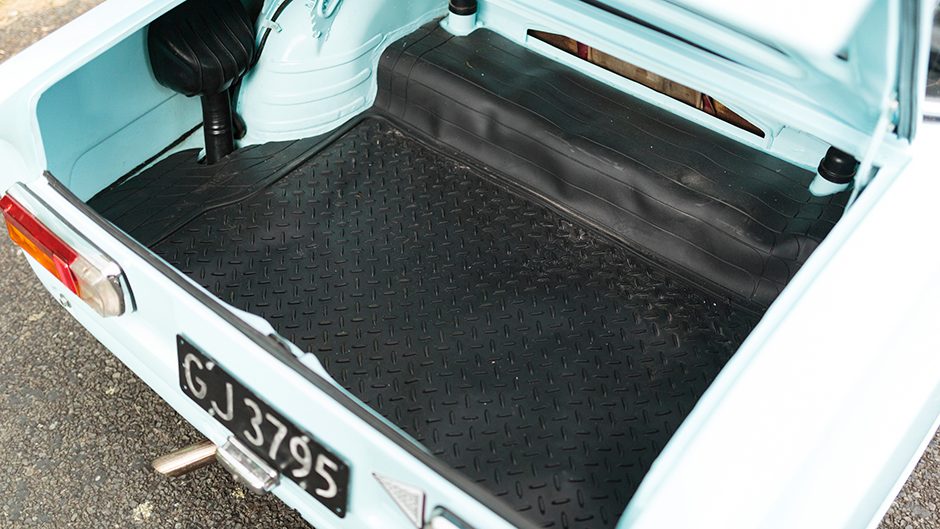
Enter the barn-find Giulias. A tip-off led to a couple of shells languishing in Putaruru. The father and son team trekked down, did their due diligence, before returning with a car trailer – twice – to rehome the somewhat sad looking pair. What turned out to be the chosen car had been the subject of an aborted ‘restoration’ some 25 years prior.
“It had a few patches of rust repaired, had some badly replaced sills, loads of primer patches but it was pretty much complete, and importantly had the plates on hold,” Rob explains. As it transpired, the registration issue proved the kicker, and so began the revival of GJ3795. Structural integrity isn’t a renowned feature of classic Alfas.
“Step one was to send it to the sand blaster and cross our fingers,” Rob says of the project’s genesis. “It was pretty good. The front footwells were a bit holey, large parts of the sills were gone, but above the hip-line it was great. The gutters, and those hard-to-fix spots were all solid.” The brief called for a car that could “do it all.”
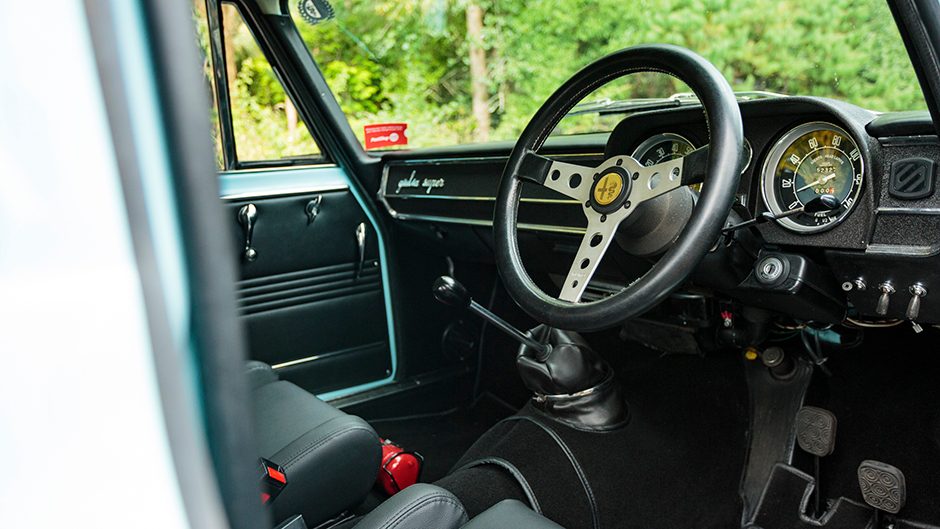
Backroad blasts and track fun were priorities, but also comfort on longer journeys and the ability to shoot down to the shops needed to be considered. But it had to retain a period aesthetic or, as Rob describes it, “I wanted it to be my interpretation of a cafe racer.”
Inspiration was found via the Internet. The man behind LA-based DV Mechanics, Dorian Valenzuela, had documented much of his own de-bumpered, lowered, period-cool-beige Giulia. As Rob explains, “I saw Dorian’s car, and instantly knew I wanted it bumperless. I knew I wanted it low, stripped down, dechromed, and it had to have the classic TZ-style touring car wheels.”
It took 18 months to get the body in order, thanks in part to a retired panel beater friend and cannibalising the odd part from the sacrificial Giulia. A kitchen renovation inspired the colour. It’s actually a Resene interior hue named “French pass,” kind of apt for a corner-slaying classic build. With the bumpers and most of the brightwork cast aside it channels the 1960’s Sunday racer vibe, hunkering down over the TZ-style 15-inch alloys in the style of the period touring cars.
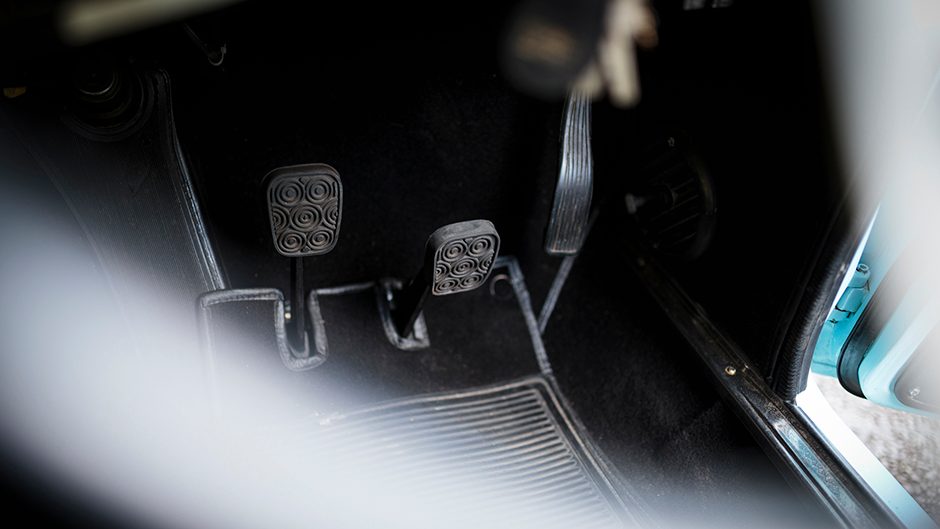
The inner headlamps are even missing, substituted for mesh, along with the a chrome deletion from the frowny front end. UK Alfa tuner extraordinaire, Alfaholics, provided the handling package. It’s their ‘trackday’ set-up, with Bilstein shocks on all four corners, lowered and uprated springs, a big 29mm antiroll bar, adjustable top arms and poly bushes throughout. It sounds hardcore, but Rob reckons it handles the bumpy Kiwi B-roads with aplomb, endowing the Giulia with nimble but stable manners. Interestingly, compared to the 105-series coupes the Giulia is a little less nervous on the limit, and a lot more predictable. A fact only strengthened by short clips of sideways track antics on Rob’s Instagram feed!
A GTV coupe 2.0-litre now lies beneath the bonnet. With it comes a handy increase in power and torque, around 40hp up on stock with 131hp under the right foot and all the right noises from the twin Weber DCOE 40mm carbs. The stripped-down aesthetic even continues in the interior, headed by an era-specific Momo Protitipo steering wheel.
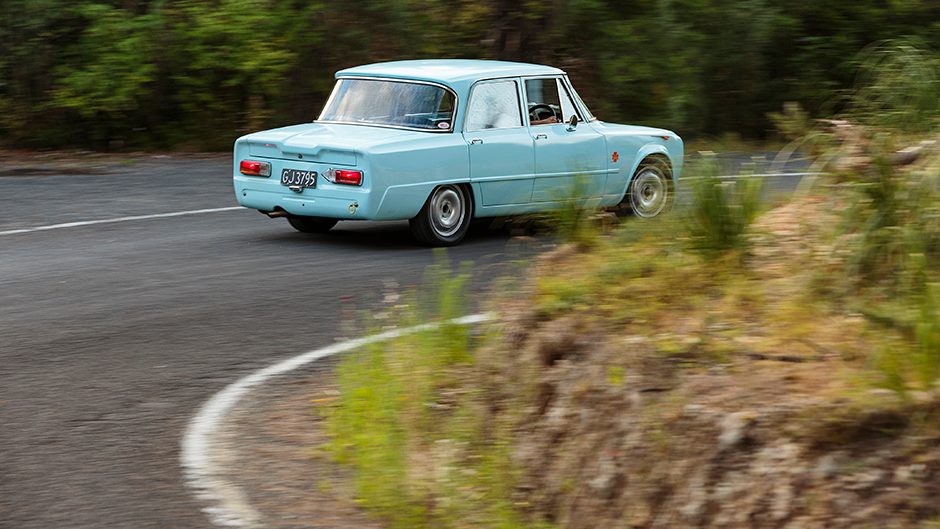
Low-back reclining seats ensure adequate support while throwing the Giulia through the bends, watching the Veglia dials streak clockwise. Since being back on the road the Giulia’s seen exactly the intended use. It’s been tracked. It’s sat in traffic during the daily commute. It’s even completed a few longer distance road trips. The constant is the attention it gets, no matter what situation Rob and the blue sedan find themselves in.
“People are just really interested in it, even if you park it next to the GT coupe, people just want to come and talk about it.” It’s proof minimalism will never go out of style and that a measured build can never be contrived as “non-purist”.


